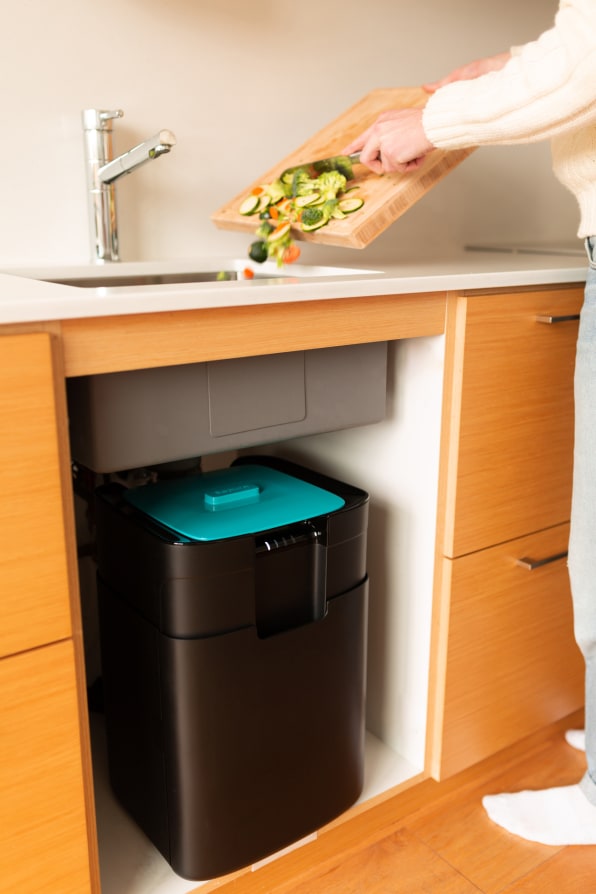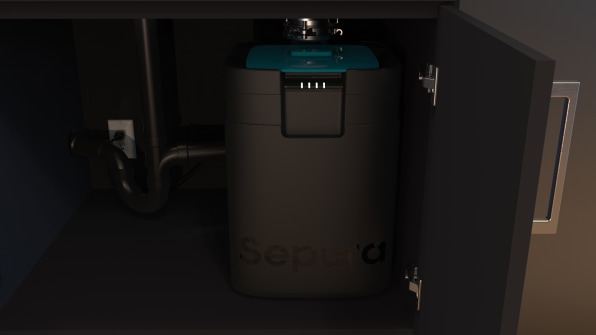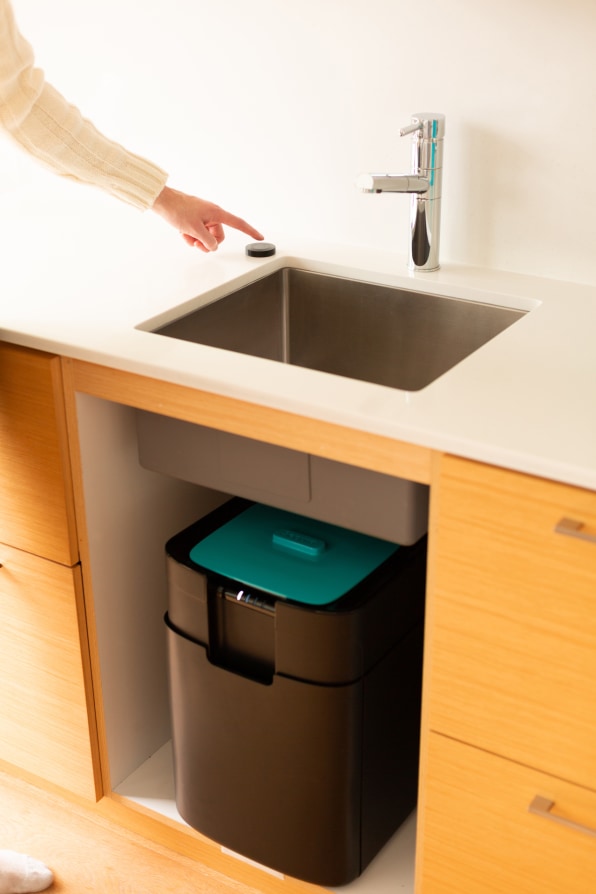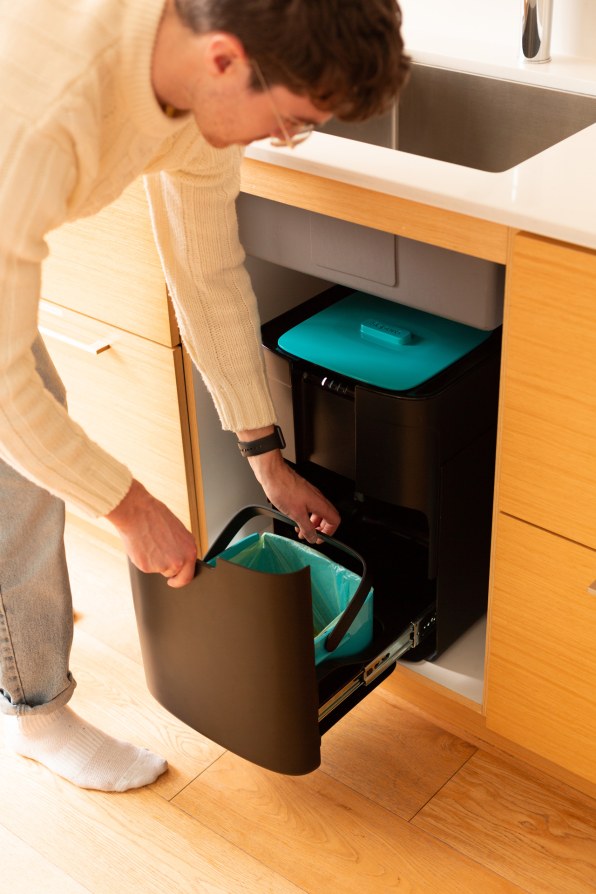[ad_1]
At the end of a typical meal, uneaten bits of food head to one of two places: into a bin to be landfilled or composted, or down the drain of the kitchen sink to be chopped up by spinning blades and sent down the sewer. Now a Canadian startup has created a device that intends to provide a third—and better—option.
Sepura is an in-sink food separator system that allows people to dump their food scraps into the drain like they would if they were using a garbage disposal. But instead of grinding up the food and sending it down the pipes, Sepura separates food scraps from liquids with a finely perforated base; the liquids drain into the pipe while a corkscrew-like auger spins and directs the solids into a collector bin stored under the sink.

“You can think of it as a reverse juicer,” says cofounder Connor Pickard. Like the switch on an in-sink waste disposal, a wireless button activates Sepura’s auger and separates scraps into the bin. It takes roughly two to four weeks to fill up, after which users transfer the scraps to their own compost bin, to a municipal food scrap collection bin, or to the trash.
The device attaches to the bottom of a sink drain with the same 3-inch mount as a standard garbage disposal. It’s intended to take the place of a typical in-sink disposal and eliminate what Sepura sees as some of the conventional system’s main faults.

The big issue, the company posits, is that food ground up in a garbage disposal can still end up clogging drains and pipes within residences and out in municipal sewer systems. Sepura cofounder and CEO Victor Nicolov learned this the expensive way, when a bunch of potato peels sent down the disposal turned into a massive plumbing repair job.
The company worked with city officials near its home base of Victoria, British Columbia, to design a system that would help reduce the common food clogs that have led some municipalities, including Toronto and Ottawa, to discourage the installation of garbage disposals (or “garburators” as they’re known in Canada).
But the potential for clogs may be overblown. The city of New York instituted a garbage disposal ban in the 1970s only to lift it in the 1990s after studying the impact of the devices and finding no municipal-level plumbing problems.
Sepura also offers an environmentally conscious alternative to dumping food scraps by requiring less energy to operate than a disposal unit and keeping more emissions-producing food waste out of landfills. Pickard says that in places where composting isn’t available, dumping food waste down the garbage disposal may seem like a better alternative to putting it in your trash can, but it may not be all that different in the end. “It typically ends up at a wastewater treatment plant. And at those plants a majority of the time that food is scraped out and sent to a landfill anyway,” he says.

Sepura aims to make it easier to keep food waste out of the food stream completely, diverting it for residential and municipal composting. The bin traps both the heat and stink of decomposing food through air intakes and a carbon filter, and Pickard says the scraps end up drier than food dumped into a typical countertop compost collector.
“By the time you go to empty it, when you open it up you’re not getting hit with that wave of the gross smell,” Pickard says. “It may not look very good, but . . . in the absence of moisture you have the absence of the bacteria that causes the smell.”

Sepura’s not alone in trying to shake up the way people deal with their kitchen scraps. Mill, founded by the cocreator of the Nest smart thermostat, is a stand-alone garbage bin that grinds and dehydrates food scraps into a powder-like dust that’s shipped to facilities and turned into chicken feed. Both companies are intent on reducing the environmental impact of food waste and the landfills where they end up.
Pickard says the black and teal design of Sepura was influenced by the curves and finishes of consumer products from companies like Apple and the cars of Tesla and Rivian. The aim was to make a tech product that would fit just as well aesthetically in a rustic farmhouse as in a modern kitchen. (The device is also designed to work well with septic systems, keeping food scraps out of tanks and reducing how often they need to be pumped.)
In early April, the first 3,000 preordered units are shipping out from Sepura’s warehouse to customers across every Canadian province and about 30 U.S. states. By summer, the company expects to have another 5,000 or more units available for direct orders, and through one retailer in Canada.
Sepura sells for $800, which is more than four times the cost of a typical garbage disposal. Pickard argues that the device is simply a better way of dealing with problematic food waste, easing the process of home composting. It may also help resolve other domestic issues, which he’s noticed since installing his own Sepura. “My fiancée and I are arguing a lot less about who’s dealing with the compost because it’s not in our face every day and we’re not smelling it all the time,” he says. “Personally, it’s really helped my relationship.”
[ad_2]
Source link

